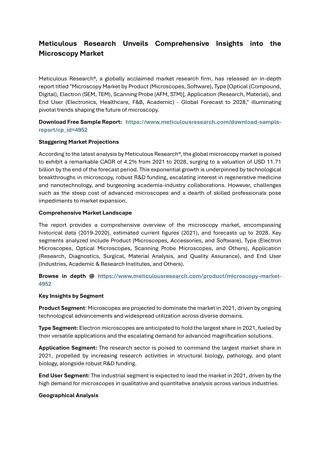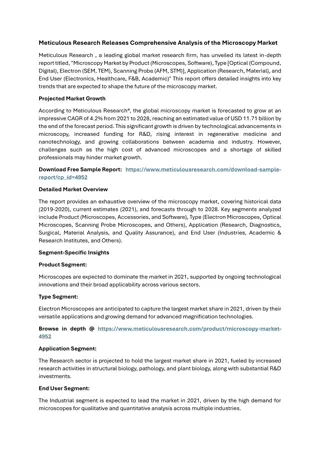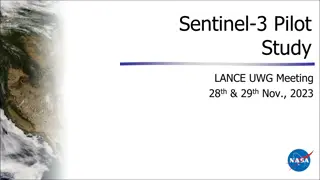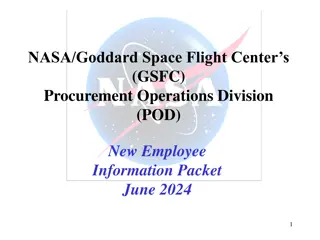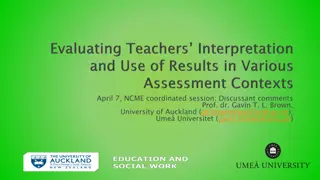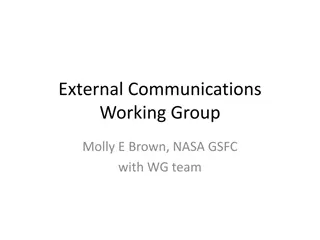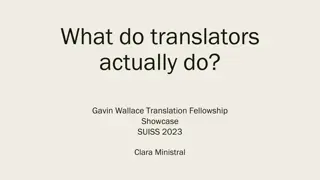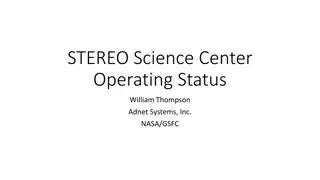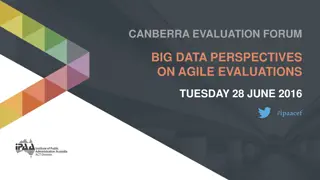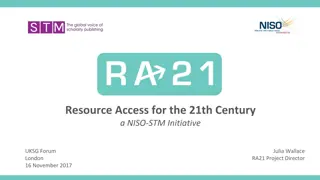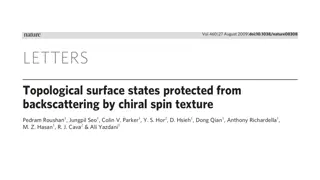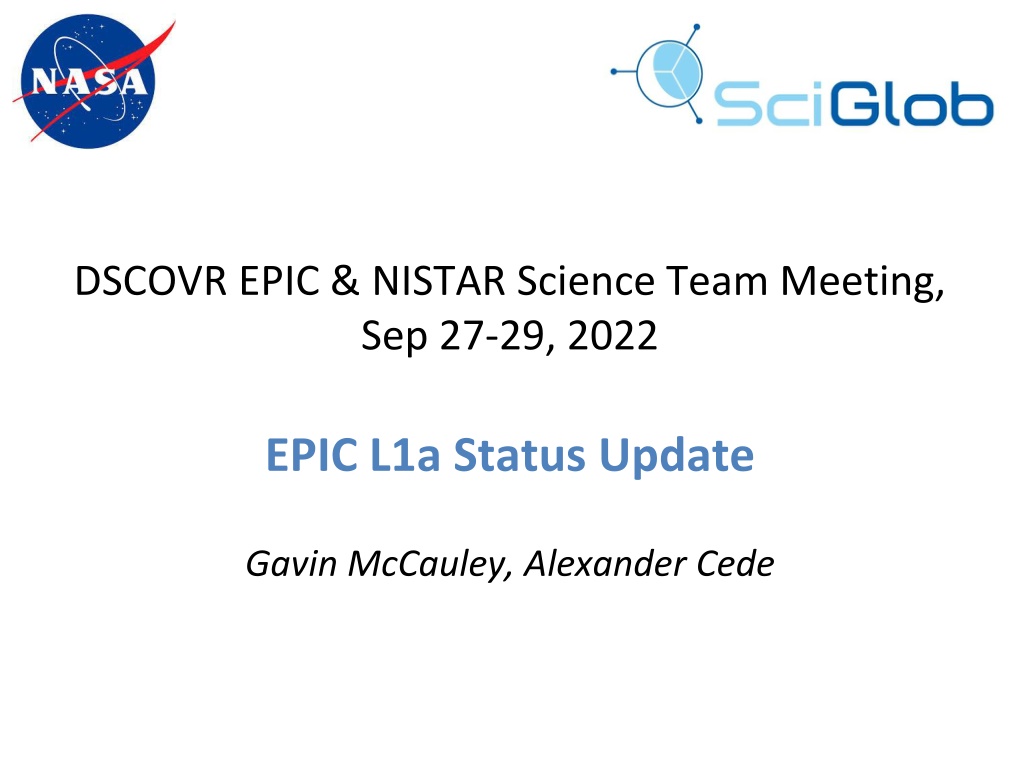
DSCOVR EPIC NISTAR Science Team Meeting Update
"Learn about the latest status updates and processor revisions from the DSCOVR EPIC NISTAR Science Team Meeting held on Sep 27-29, 2022. Discover insights into the processing steps and paper publications in collaboration with Frontiers Remote Sensing."
Download Presentation

Please find below an Image/Link to download the presentation.
The content on the website is provided AS IS for your information and personal use only. It may not be sold, licensed, or shared on other websites without obtaining consent from the author. If you encounter any issues during the download, it is possible that the publisher has removed the file from their server.
You are allowed to download the files provided on this website for personal or commercial use, subject to the condition that they are used lawfully. All files are the property of their respective owners.
The content on the website is provided AS IS for your information and personal use only. It may not be sold, licensed, or shared on other websites without obtaining consent from the author.
E N D
Presentation Transcript
DSCOVR EPIC & NISTAR Science Team Meeting, Sep 27-29, 2022 EPIC L1a Status Update Gavin McCauley, Alexander Cede
L1a Processing Steps L1a Update DSCOVR EPIC & NISTAR Science Team Meeting GSFC, 27-29 September 2022 Unbolded steps have not changed since last year. The CCD detector remains healthy as evidenced by nominal dark counts, dark bias, and read noise trends as well as stable levels of saturated and enhanced pixels. In this vein, no news is good news . This talk does not go over these nominal updates further. Bolded steps have had processor updates in the past year, whilst monitoring and maintaining the dark correction and detector performance. Processing step Dark correction Enhanced pixel detection Read wave correction Latency correction Non-linearity correction Temperature correction Conversion to count rates Flat fielding Stray light correction Conversion to radiances* * Not done by SciGlob Average impact Moderate Small Small Moderate Small Small Small Significant Significant Significant Affected pixels impact Extreme Large Small Significant Small Small Small Large Large Significant 2
L1a Update DSCOVR EPIC & NISTAR Science Team Meeting GSFC, 27-29 September 2022 Frontiers Paper As part of the Frontiers Remote Sensing collaboration with DSCOVR, we have published a paper on the L0 to L1a process in detail, Raw EPIC Data Calibration . This paper gives an overview of the mathematics and the pre- launch and on-orbit calibration behind each correction step, beyond the scope of this presentation. https://www.frontiersin.org/articles/10.3389/frsen.2021.702275/full 3
L1a Update DSCOVR EPIC & NISTAR Science Team Meeting GSFC, 27-29 September 2022 Frontiers Paper 4
L1a Update DSCOVR EPIC & NISTAR Science Team Meeting GSFC, 27-29 September 2022 L1a Processor Input Updates Submitted L1a processor version 20, as part of a series of revisions to eventually be incorporated into an official V04 on EPIC website (AVDC database) This is two internal versions since last year (version 18). (Official V03 uses SciGlob v13) 5
L1a Update DSCOVR EPIC & NISTAR Science Team Meeting GSFC, 27-29 September 2022 L1a Processor Input Updates v19: The stray light algorithm was expanded to freely parameterize the core radius This determines how many pixels around the center for a given pixel s PSF* calculation are done in full accuracy, instead of binning groups of pixels as one calculation, when calculating and saving the stray light correction matrix. R=4.0 *Point Spread Function, every pixel s reading on the CCD, normalized, when a point light source is focused right in the center of a specific pixel, a key component to stray light correction. There is a delicate balance of size vs. precision (2048x2048 data for every 2048x2048 pixel, infeasible at full precision) depending upon the core radius, the current radius requires a correction matrix of size ~208 GB per filter. See paper for more detailed information. 6
L1a Update DSCOVR EPIC & NISTAR Science Team Meeting GSFC, 27-29 September 2022 L1a Processor Input Updates v20: The algorithm used to determine which pixels were regular and on target was improved. Criteria for enhanced pixels tweaked, based on how much higher a pixel s value is than its neighbors. This pixel-type array is proprietary by us, and is available in the L1a files on EPIC website. 7
L1a Update DSCOVR EPIC & NISTAR Science Team Meeting GSFC, 27-29 September 2022 L1a Processor Input Updates Filter 9 (label i ) has high effects of cloud/ice features, which inaccurately inflated the size of the target 8
L1a Update Dark Trending Characterization DSCOVR EPIC & NISTAR Science Team Meeting GSFC, 27-29 September 2022 Measured dark anomaly (blue points) represents difference between in-flight darks and pre-launch dark characterization (CALFILE v12). Red data points are residuals between measured dark anomaly (blue) and CALFILE v20 fit. Previous versions of the dark rate map implemented in official V01 of the L1a differed from the weekly measured dark count exhibiting a seasonal cycle and drift (blue). Refinements to the characterization have improved the performance over time. The latest characterization pictured above, included as of SciGlob software version v17, captures the two (and upcoming third) most recent peaks (past the safehold period of 2019) particularly well, with residuals largely within a half-count. Since last year, a4 and a5 are allowed to vary instead of static values of 1 year and 0, respectively. 9
L1a Update DSCOVR EPIC & NISTAR Science Team Meeting GSFC, 27-29 September 2022 Summary L1a processor version updated with extra parameter for straylight, backfix on pixtype calculation for on-target as well as enhanced pixels. The CCD detector remains healthy. The dark count correction incorporated in the current EPIC processing chain still describes the dark trend in a satisfactory way. Please contact us (gmccauley@sciglob.com, alexander@sciglob.com) if you discover any suspected calibration effects in your L2 science products. 10


